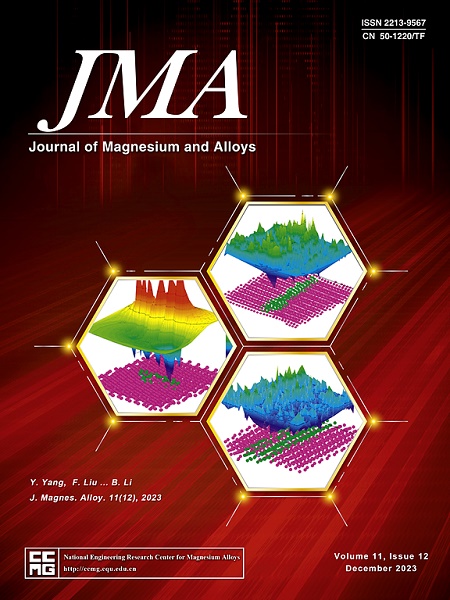高分散掺杂镍纳米粒子的空心球形氮化钒催化下 MgH2 的储氢性能
IF 15.8
1区 材料科学
Q1 METALLURGY & METALLURGICAL ENGINEERING
引用次数: 0
摘要
氢化镁(MgH2)是一种特殊的储氢材料,但其较高的解吸温度和缓慢的动力学特性限制了它的应用。在本研究中,使用高分散掺杂镍纳米粒子的空心球状氮化钒(Ni/VN)提高了 MgH2 的储氢性能。掺杂了合成镍/氮化钒的 MgH2 体系具有出色的储氢能力。具体而言,在相对较低的 513 K 温度下,1 小时内释放出 5.6 wt.% 的 H2;在 598 K 温度下,180 秒内释放出 6.4 wt.% 的 H2;在 598 K 温度下 10 分钟后,几乎完全脱氢。测定的脱氢活化能为 78.07 ± 2.91 kJ-mol-1,大大低于球磨法生产的 MgH2(120.89 ± 5.74 kJ-mol-1),相当于降低了 35.4%。由此推断,在脱氢/加氢过程中,镍纳米颗粒通过反应形成 Mg2Ni/Mg2NiH4(氢泵),促进了氢的传输,并协同催化了 MgH2 对氢的吸收和解吸,提高了其储氢能力。这些发现为大规模应用 MgH2 提供了新的前景。本文章由计算机程序翻译,如有差异,请以英文原文为准。
Hydrogen storage performance of MgH2 under catalysis by highly dispersed nickel-nanoparticle–doped hollow spherical vanadium nitride
Magnesium hydride (MgH2) is an exceptional material for hydrogen storage, but its high desorption temperature and slow kinetics limit its applicability. In this study, the hydrogen storage performance of MgH2 was enhanced using highly dispersed Ni-nanoparticle–doped hollow spherical vanadium nitride (Ni/VN), which was synthesized via a solvothermal process. The MgH2 system doped with the synthesized Ni/VN exhibited an outstanding hydrogen-storage capability. Specifically, 5.6 wt.% of H2 was released within 1 h at a relatively low temperature of 513 K, whereas 6.4 wt.% of H2 was released within 180 s at 598 K, followed by an almost complete dehydrogenation after 10 min at 598 K. At 423 K, the developed material absorbed ∼6.0 wt.% of H2 within 5 min. The activation energy for dehydrogenation was determined to be 78.07 ± 2.91 kJ·mol−1, which was considerably lower than that of MgH2 produced by ball milling (120.89 ± 5.74 kJ·mol−1), corresponding to a reduction of 35.4%. It was deduced that the formation of Mg2Ni/Mg2NiH4 (hydrogen pump) through the reaction of Ni nanoparticles during dehydrogenation/hydrogenation facilitated hydrogen transport and synergistically catalyzed hydrogen absorption and desorption by MgH2, improving its hydrogen storage capability. These findings offer novel perspectives for the utilization of MgH2 in large-scale applications.
求助全文
通过发布文献求助,成功后即可免费获取论文全文。
去求助
来源期刊

Journal of Magnesium and Alloys
Engineering-Mechanics of Materials
CiteScore
20.20
自引率
14.80%
发文量
52
审稿时长
59 days
期刊介绍:
The Journal of Magnesium and Alloys serves as a global platform for both theoretical and experimental studies in magnesium science and engineering. It welcomes submissions investigating various scientific and engineering factors impacting the metallurgy, processing, microstructure, properties, and applications of magnesium and alloys. The journal covers all aspects of magnesium and alloy research, including raw materials, alloy casting, extrusion and deformation, corrosion and surface treatment, joining and machining, simulation and modeling, microstructure evolution and mechanical properties, new alloy development, magnesium-based composites, bio-materials and energy materials, applications, and recycling.
 求助内容:
求助内容: 应助结果提醒方式:
应助结果提醒方式:


